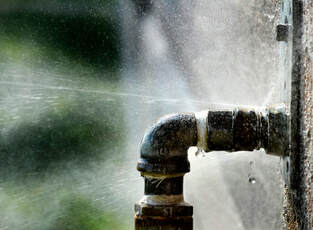Each person has got their own unique theory involving Top leak detection hacks.

Early discovery of dripping water lines can mitigate a prospective calamity. Some tiny water leaks may not be noticeable.
1. Analyze the Water Meter
Every home has a water meter. Examining it is a surefire way that assists you uncover leakages. For starters, turn off all the water sources. Make sure no person will flush, use the faucet, shower, run the washing device or dish washer. From there, most likely to the meter and also watch if it will certainly transform. Given that no person is utilizing it, there need to be no movements. That shows a fast-moving leakage if it moves. Similarly, if you find no changes, wait a hr or 2 as well as check back again. This means you may have a slow leak that could also be below ground.
2. Inspect Water Consumption
Assess your water costs and also track your water usage. As the one paying it, you ought to notice if there are any kind of disparities. If you detect sudden changes, in spite of your usage being the same, it suggests that you have leakages in your plumbing system. Remember, your water costs must fall under the exact same variety on a monthly basis. An unexpected spike in your bill shows a fast-moving leakage.
A constant boost every month, even with the exact same practices, reveals you have a sluggish leak that's additionally slowly intensifying. Call a plumber to thoroughly examine your building, particularly if you feel a warm location on your floor with piping beneath.
3. Do a Food Coloring Examination
When it comes to water consumption, 30% comes from commodes. If the color in some way infiltrates your dish during that time without flushing, there's a leak between the container and also dish.
4. Asses Outside Lines
Don't fail to remember to inspect your exterior water lines too. Test spigots by connecting a yard hose pipe. Must water permeate out of the link, you have a loose rubber gasket. Replace this as well as make sure all links are limited. It will assist obtain it properly checked out and also maintained annually if you've got a sprinkler system. One tiny leak can squander tons of water as well as surge your water expense.
5. Evaluate the circumstance as well as check
House owners need to make it a behavior to examine under the sink counters and also also inside cupboards for any type of bad odor or mold growth. These two red flags show a leakage so timely interest is needed. Doing routine assessments, even bi-annually, can save you from a major problem.
Check for stainings and damaging as many pipelines as well as devices have a life expectancy. If you believe dripping water lines in your plumbing system, don't wait for it to rise.
Early detection of dripping water lines can mitigate a prospective disaster. Some small water leaks might not be visible. Inspecting it is a proven way that assists you uncover leaks. One small leakage can lose loads of water as well as increase your water bill.
If you presume dripping water lines in your plumbing system, don't wait for it to intensify.
WARNING SIGNS OF WATER LEAKAGE BEHIND THE WALL
PERSISTENT MUSTY ODORS
As water slowly drips from a leaky pipe inside the wall, flooring and sheetrock stay damp and develop an odor similar to wet cardboard. It generates a musty smell that can help you find hidden leaks.
MOLD IN UNUSUAL AREAS
Mold usually grows in wet areas like kitchens, baths and laundry rooms. If you spot the stuff on walls or baseboards in other rooms of the house, it’s a good indicator of undetected water leaks.
STAINS THAT GROW
When mold thrives around a leaky pipe, it sometimes takes hold on the inside surface of the affected wall. A growing stain on otherwise clean sheetrock is often your sign of a hidden plumbing problem.
PEELING OR BUBBLING WALLPAPER / PAINT
This clue is easy to miss in rooms that don’t get much use. When you see wallpaper separating along seams or paint bubbling or flaking off the wall, blame sheetrock that stays wet because of an undetected leak.
BUCKLED CEILINGS AND STAINED FLOORS
If ceilings or floors in bathrooms, kitchens or laundry areas develop structural problems, don’t rule out constant damp inside the walls. Wet sheetrock can affect adjacent framing, flooring and ceilings.
https://www.servicemasterbyzaba.com/blog/how-to-detect-water-leakage-in-walls/

As an enthusiastic reader about Detecting hidden plumbing leaks, I was thinking sharing that excerpt was sensible. If you enjoyed reading our article if you please be sure to pass it around. Kudos for your time. Don't forget to come by our site back soon.
Get Quote Now